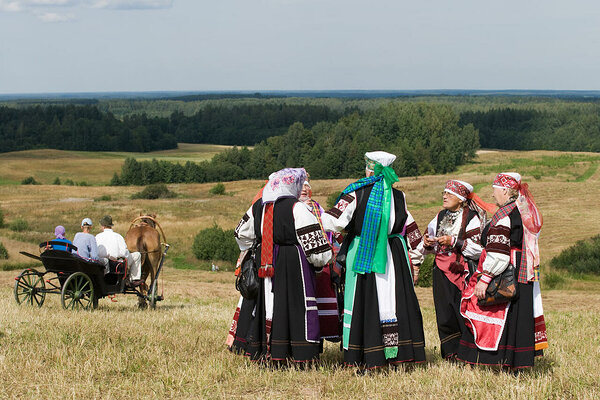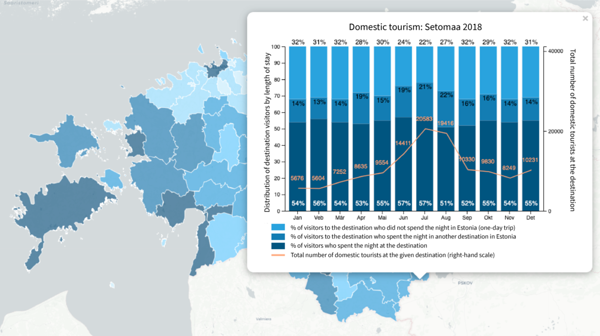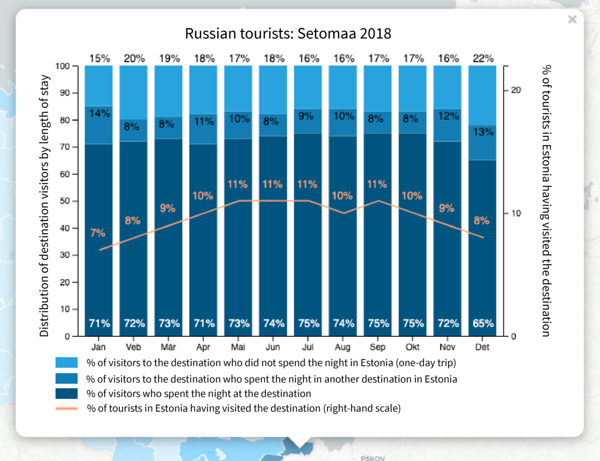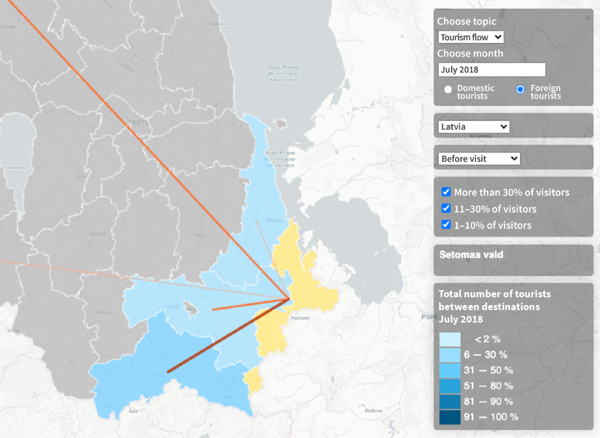Local tourism insights from MPD – Setomaa in South Estonia
At the South-Eastern-most corner of Estonia, there lives a people whose mystical language, enchanting leelo and ancient traditions are protected under the UNESCO World Heritage label. Combined with the breath-taking landscape, South Estonia’s rich cultural heritage attracts visitors from all over the world. But how do we know that?
It became an important point of comparison to accommodation data, which we used before even though we knew it was flawed.
– Elin Priks, NGO VisitSetomaa
This is where mobile positioning data (MPD) steps in. In rural tourism communities such as Setomaa, the available statistics might not be as granular or might be misleading decision-makers in the area. Having a good understanding of what places are visited and who are these visitors allows for better allocation of regional resources. (See also Kalvet et al., 2020) “MPD has given us a whole new perspective. It became an important point of comparison to accommodation data, which we used before even though we knew it was flawed. The ability to see tourism flows and movements gave us important insights which help us plan marketing better,” says Elin Priks, CEO of the NGO VisitSetomaa.
We conducted an analysis of the area using the EAS tourism dashboard. A quick analysis showed that Setomaa has a high proportion of overnight stays – about 50% of domestic tourists who visit the area. In fact, if a tourist stays in the area for more than two hours, it is very likely that they will stay the night. 2018 saw an increase in the number of tourists by 12% (14,000 people) in comparison to the previous year. The tourism dashboard allowed us to take a closer look at some visitor profiles by country, as well.
About 4% of total Latvian tourists to Estonia visited Setomaa and its adjacent areas, with 67% of them staying overnight. Russian tourists, for example, like to explore the rest of Estonia during their summer travels as well. Around 10% of all Russian tourists who visit Estonia go to Setomaa, with 72% staying overnight. It is known that many Russian tourists enjoy a spa vacation, so they visit Värska where they also often stay overnight. During their trip they also frequent places like Tallinn, Pärnu, Tartu and Narva. On the other hand, only around 1% of Finnish and German tourists reach Setomaa. But those that do are very valuable to Setomaa tourism.
Many European tourists like to travel with camping
vehicles. They are interested in the submersive cultural experience of the
area. At the same time, their travel activity leaves a minimal trace in payment
and accommodation records because of their chosen mode of travel. So while
Germans barely get noted with current statistical collection methods, with MPD
they show up very clearly.
It is one thing to do all your activities based on gut feeling, but we also need to measure the impact.
– Elin Priks, NGO VisitSetomaa
Luckily, the COVID-19 pandemic did not affect tourism in Setomaa too much, as the peaks of the pandemic fell into the low season of tourism. In Setomaa, tourism is a secondary source of income for many people who, during the off-season, do their primary work. The summer of 2020, however, was phenomenally successful due to sudden high levels of domestic tourism. It is believed that the summer of 2021 will be as successful as the previous, as 80% of people plan to take domestic trips.
Elin Priks from NGO VisitSetomaa described the benefits of MPD:
“We have already applied
the knowledge we gained from MPD in tourism marketing. Tourism flows were
particularly valuable to us, as we got to know where people come from and where
they go. This helps us to direct marketing activities and collaborate with
different partners inside and outside Setomaa. It is also very important to know how many
one day and overnight visitors we have. It came as a surprise that 10% of all
Russian tourists come to Setomaa, as our region is really small. We are seeing
that nature tourism and hiking are becoming more and more popular among both
local and foreign tourists because during COVID that was really the only kind
of tourism allowed. Compared to previous times, there’s also more spontaneity,
short-term bookings, and travelling using caravans which require us to be more
flexible. I would definitely recommend using MPD for any regional tourism
organisation. It is one thing to do all your activities based on gut feeling,
but we also need to measure the impact, and that can be quite tricky in a
region with mainly small businesses and unreliable accommodation data. MPD gave
us the confidence that we didn’t have before.”
Would you be interested in learning more about mobile big data and Positium? Let's talk about what mobile big data can do to help your organisation make decisions based on population mobility.
.png)



